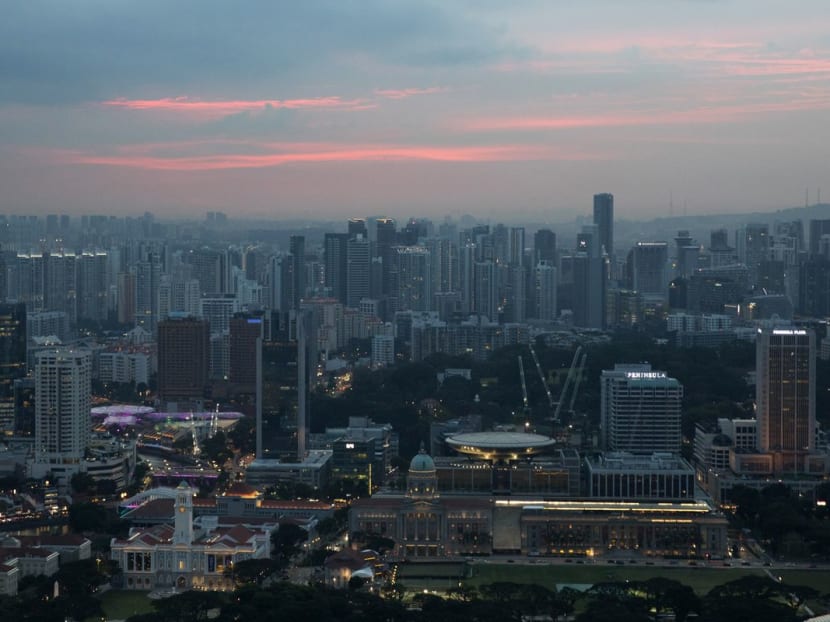What the cooling measures mean for the private property market
The government is perhaps of the view that the best way to safeguard the health of Singapore’s property market and prevent it from overheating is to nip the exuberance in the bud. The demand-side measures announced on Thursday (July 5) could be the most draconian since the anti-speculative measures in 1996.

The revised ABSD levies together with the stamp duties could make upfront acquisition costs for investors one of the highest in the world, says the author.
The government is perhaps of the view that the best way to safeguard the health of Singapore’s property market and prevent it from overheating is to nip the exuberance in the bud.
The demand-side measures announced on Thursday (July 5) could be the most draconian since the anti-speculative measures in 1996.
Although it is just an add-on to the earlier Additional Buyer’s Stamp Duty (ABSD) rates, the effective acquisition cost for both buyers and developers has increased substantially along with further loan curbs.
The revised ABSD levies together with the stamp duties could make upfront acquisition costs for investors one of the highest in the world.
The timing of the additional cooling measures came as a surprise, as developers have just loaded up their land banks over the last 18 months in anticipation of blockbuster sales in the second half of the year and beyond.
Private property home prices have only risen 9.1 per cent over 4 quarters since the start of the recovery in the third quarter of 2017.
This pales in comparison with the recovery in the previous cycle, when prices rose by 38.2 per cent from the third quarter of 2009 to the second quarter of 2010.
With new cooling measures hurting affordability from investors to first time buyers - primarily because the loan-to-value ratio was cut to 75 per cent from 80 per cent - buying demand will take a hit.
Primary home transaction volume can take a plunge of easily 30 per cent, as developers will tread cautiously with new launches.
Although affordability will be impacted, developers are unlikely to slash prices at this juncture, before the dust settles.
We could expect a quiet quarter or two moving forward with new home sales going back to on average of 500 units a month for the rest of the year (with the exception for the month of July as buyers rushed into the three new launches on Thursday before the new tax rates taking effect).
In terms of prices, although they are only 3.6 per cent below the last peak in 2013, touching those levels would be challenging now given the battered sentiments and wide-ranging impacts.
Buyers would want to re-negotiate the terms because of the higher acquisition costs and lower affordability, but sellers with deep pockets will not budge on prices just yet.
With such mismatch in price expectations, the market could come to a standstill over the next couple of months.
ABSD rates have been raised across the board with exceptions for first-time Singaporean / Permanent Resident buyers.
This means the additional measures will affect foreigners, Singaporean/PR investors and real estate developers the most.
For example, Singaporeans buying a second property worth S$1 million, will now have to pay S$120,000 in ABSD, up S$50,000 from S$70,000 previously.
Loan-To-Value ratio will also be tightened by 5 percentage points for all housing loans granted by financial institutions.
LTV limits for mortgage equity withdrawal loans have also been tightened. With 15-24 per cent upfront acquisition costs, investors both domestic and foreign will take a backseat and re-assess the viability of the deal.
Entities buying residential properties were the hardest hit, with ABSD increasing by 10 percentage points as compared to 5 percentage points for retail buyers.
Developers now have to pay an additional 5 per cent non-remissible ABSD.
This would have a cooling effect on the en bloc market, as the cost of acquiring land has effectively increased.
Furthermore, developers now face higher risks if they are unable to sell out all the units within five years of acquiring the land.
Developers are likely to take a cautious stance in their bidding for both en bloc sites and Government Land Sales sites before the dust settles.
Given the further increase in cooling measures in the residential market, the commercial or industrial market could now see renewed interest as investors scout for other opportunities.
Commercial rents have performed strongly since 2017, and industrial rents are showing signs of stabilisation.
Though this round of cooling measure is quite heavy-handed, the outlook on buying demand remains uncertain, given the firm economic outlook, recovering labour market and strong latent demand for property investment.
ABOUT THE AUTHOR:
Christine Li is senior director and head of research at Cushman & Wakefield Singapore.






